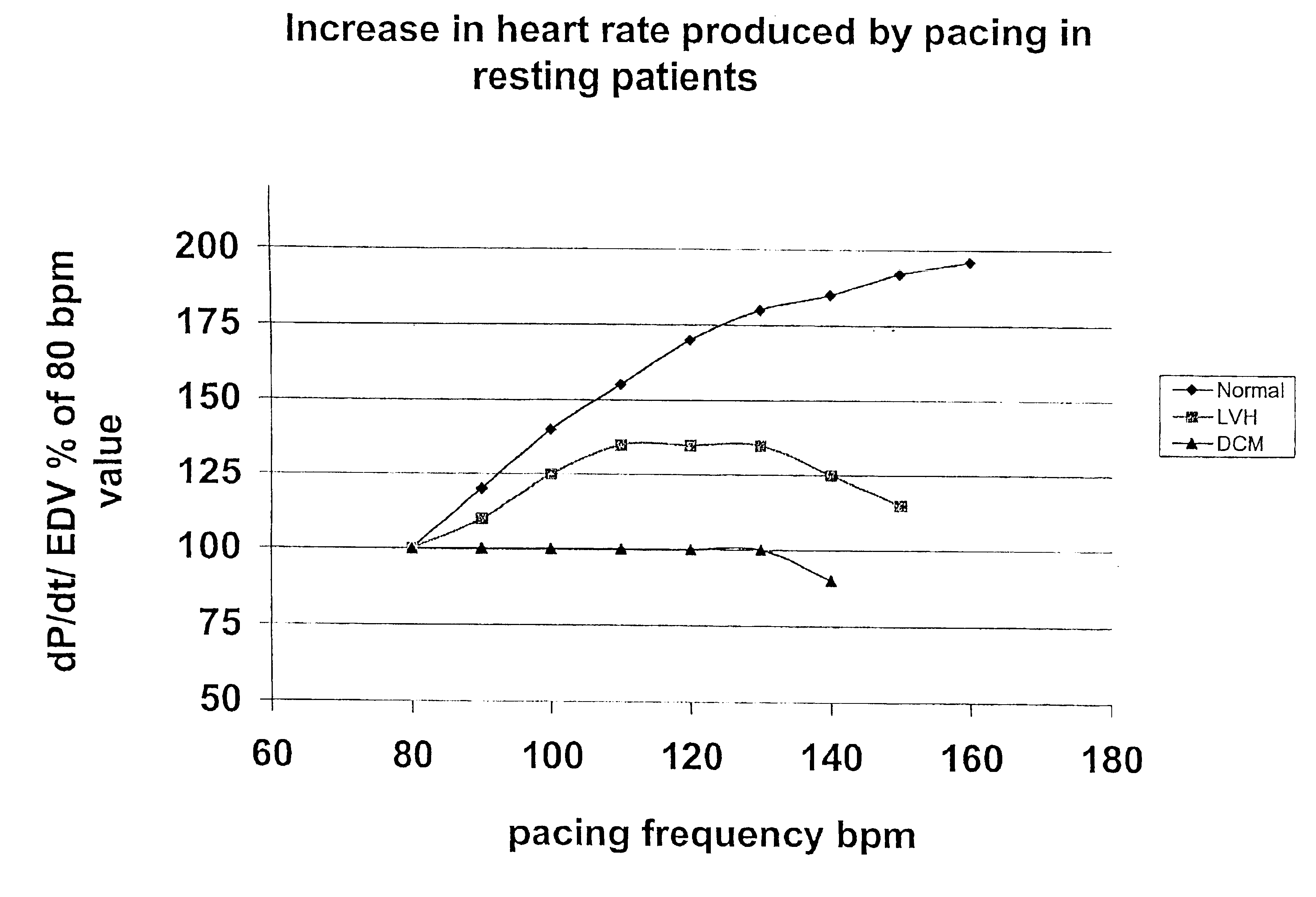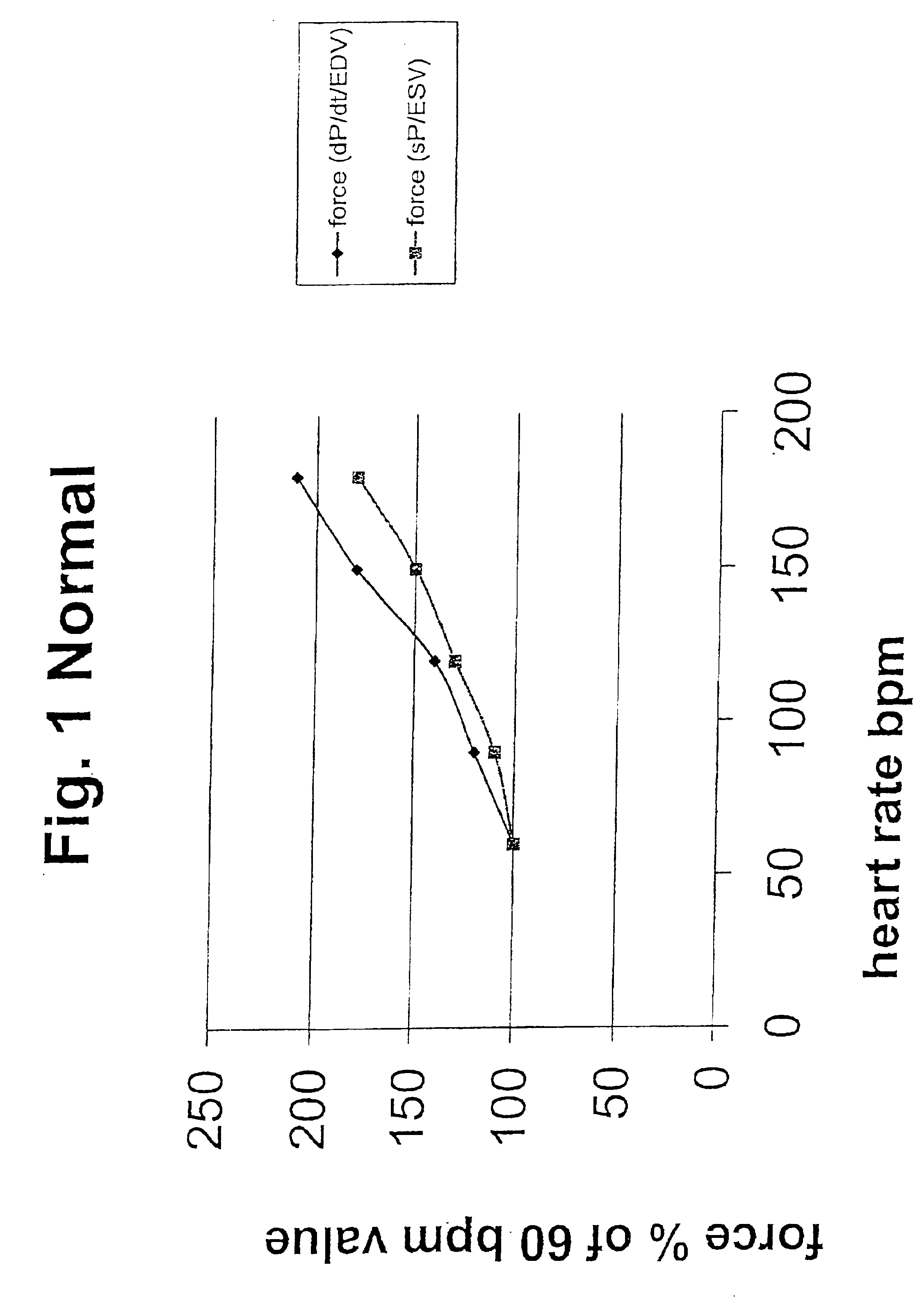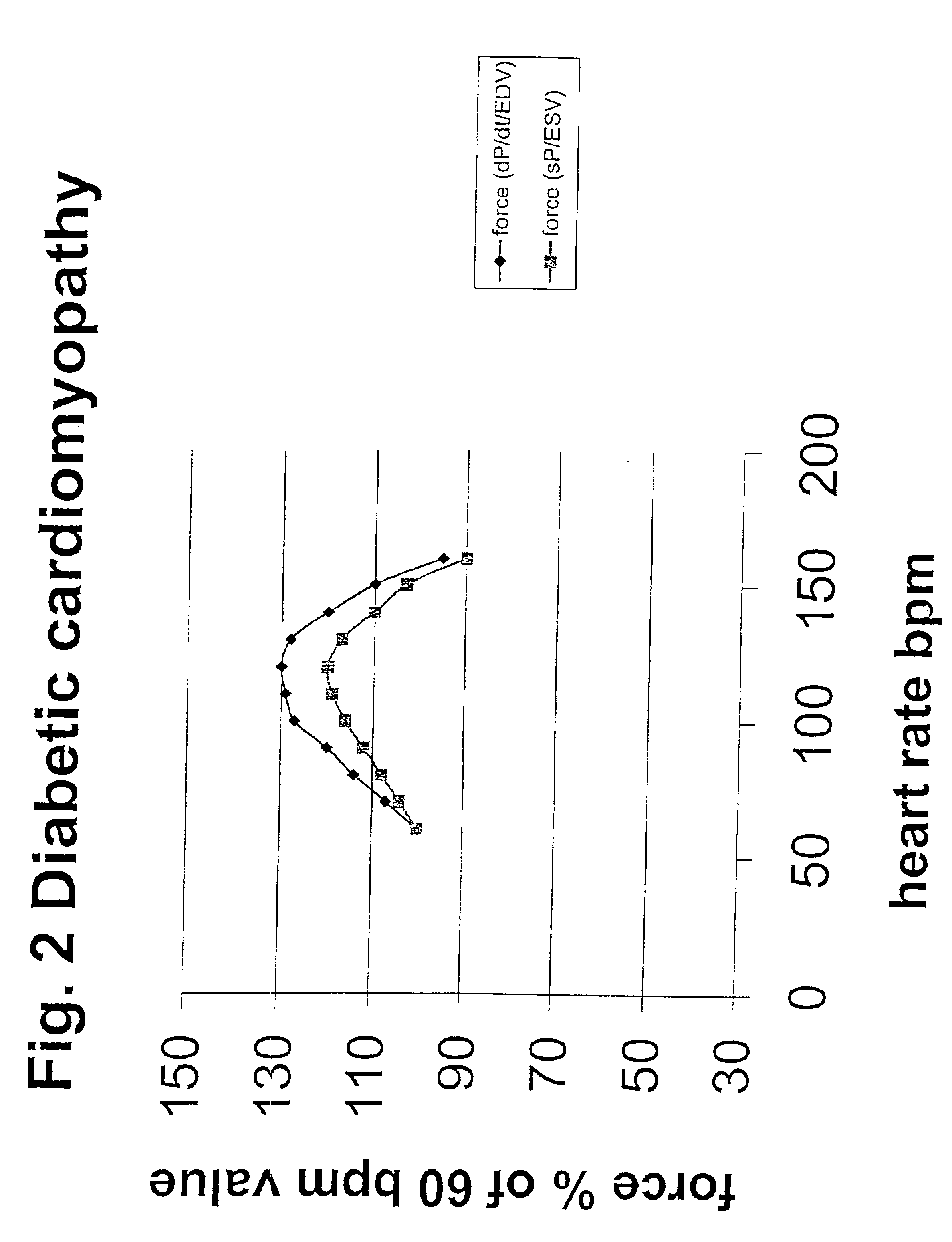Method and device for the diagnosis and therapy of chronic heart failure
a heart failure and chronic disease technology, applied in the field of chronic disease diagnosis and treatment, can solve the problems of sudden rate increase predisposing the ventricles to dilation, patients do not respond uniformly to this therapy, and the capacity of the ventricles to adapt to the greater requirement decrease, so as to save the life of the energy source and minimize non-essential energy consumption and diagnostic activity.
- Summary
- Abstract
- Description
- Claims
- Application Information
AI Technical Summary
Benefits of technology
Problems solved by technology
Method used
Image
Examples
example 2
Illustrated in FIG. 2
X-axis: heart rate bpm, (beats per minute)
Y-axis: ventricular force expressed as dP / dt / EDV=maximal rate of left ventricular pressure development divided by end-diastolic volume (EDV) or expressed as sP / ESV=left ventricular end-systolic pressure volume ratio (end-systolic ventricular pressure divided by the end-systolic volume).
Values of ventricular force in each plot are normalized with respect to the corresponding value at 60 bpm.
The force-frequency relationship within the rate range between 60 and 170 bpm is described by a curve which ascends between 60 and 110 bpm, is flat between 110 and 130 bpm, and descends between 130 and 170 bpm.
For frequencies higher than 130 bpm the cardiac intropism (dP / dt) decreases with increasing end-diastolic volume of the left ventricle (EDV); simultaneously the systolic pressure (sP) decreases and the left ventricle lowerly empties during systole (with increase in ESV).
example 3
Illustrated in the Accompanying FIG. 3
Mitral regurgitation.
X-axis: heart rate bpm, (beats per minute)
Y-axis: ventricular force expressed as dP / dt / EDV=maximal rate of left ventricular pressure development divided by end-diastolic volume (EDV) or expressed as sP / ESV=left ventricular end-systolic pressure volume ratio (end-systolic ventricular pressure divided by the end-systolic volume).
Values of ventricular force in each plot are normalized with respect to the corresponding value at 60 bpm.
The force-frequency relationship within the rate range between 60 and 160 bpm is described by a curve which ascends between 60 and 110 bpm, is flat between 100 and 120 bpm, and descends between 120 and 160 bpm. The force of the force-frequency relationship increases modestly between 60 and 100 bpm. For frequencies higher than 120 bpm the decrease in ventricular force is consistent and for frequencies higher than 130 bpm the value is less than basal. This event corresponds clinically to exertional d...
example 4
Illustrated in the Accompanying FIG. 4
X-axis: heart rate bpm, (beats per minute)
Y-axis: ventricular force expressed as dP / dt / EDV=maximal rate of left ventricular pressure development divided by end-diastolic volume (EDV) or expressed as sP / ESV=left ventricular end-systolic pressure volume ratio (end-systolic ventricular pressure divided by the end-systolic volume).
Values of ventricular force in each plot are normalized with respect to the corresponding value at 60 bpm.
The peak of the force-frequency relationship is sufficiently displaced towards low frequencies to have a negative slope over the almost entire range of frequencies in vivo (between 80 and 150 bpm). The reduction in contractile force as soon as the heart rate increases predisposes the ventricle to dilation because of venous overloading with increase in end-diastolic pressure. Because of the pejorative effect of inversion of the force-frequency relationship, a therapy is advisable which decreases h...
PUM
 Login to View More
Login to View More Abstract
Description
Claims
Application Information
 Login to View More
Login to View More - R&D
- Intellectual Property
- Life Sciences
- Materials
- Tech Scout
- Unparalleled Data Quality
- Higher Quality Content
- 60% Fewer Hallucinations
Browse by: Latest US Patents, China's latest patents, Technical Efficacy Thesaurus, Application Domain, Technology Topic, Popular Technical Reports.
© 2025 PatSnap. All rights reserved.Legal|Privacy policy|Modern Slavery Act Transparency Statement|Sitemap|About US| Contact US: help@patsnap.com



